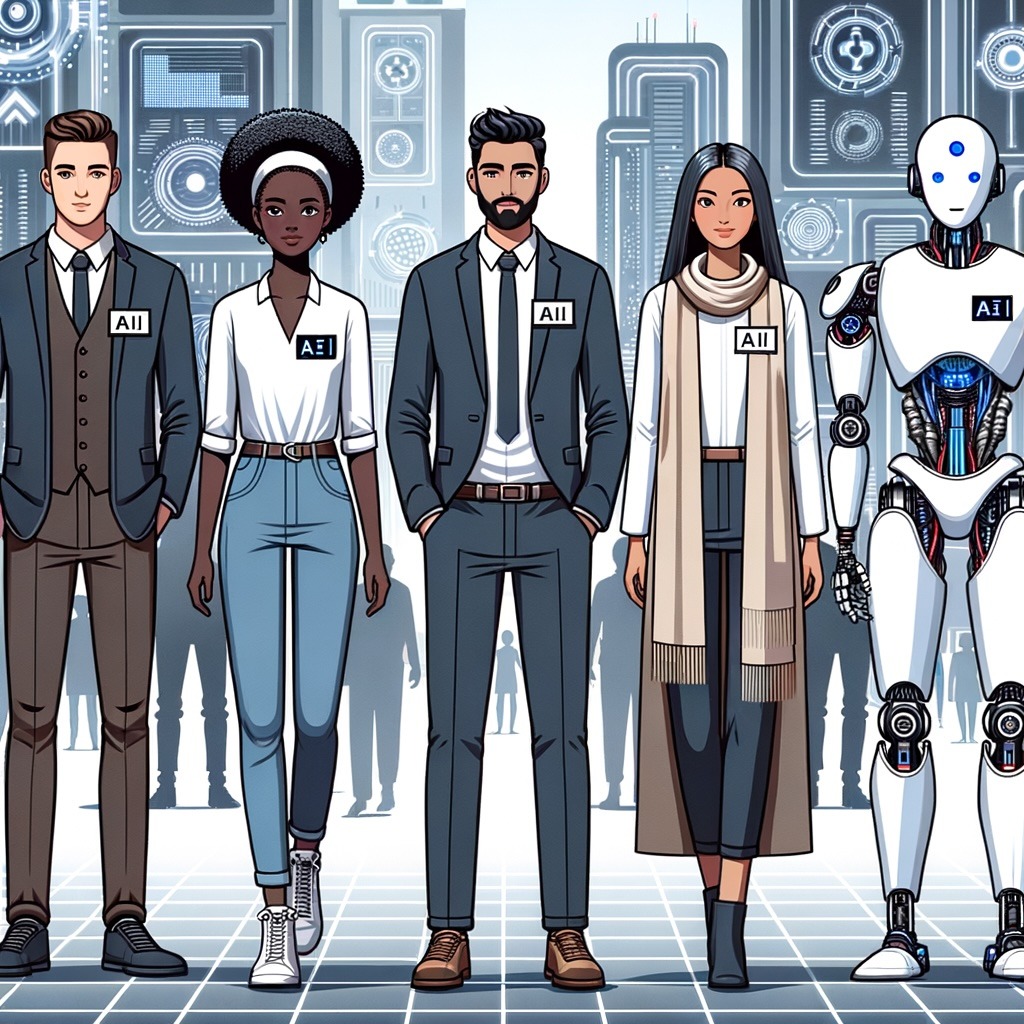Prologue: The Awakening
From voice assistants like Siri and Alexa to complex algorithms driving autonomous vehicles, AI’s influence is significant. Among the various advancements in AI, the emergence of AI agents marks a crucial paradigm shift. These agents, designed to perform tasks autonomously, learn from interactions, and make decisions based on data, fundamentally transform the landscape of AI applications. This shift brings profound implications for AI chip manufacturers, particularly industry giants like Nvidia. This blog post explores the rise of AI agents, their impact on AI chip manufacturers, and how companies like Nvidia are poised to adapt and thrive in this new era.
Understanding AI Agents
What Are AI Agents?
AI agents are thus sophisticated software units that can perceive their environment, process data, learn from it and take action to achieve specific goals. Unlike traditional software programs that follow predefined rules, AI agents use machine learning algorithms to adapt and improve their performance over time. They are capable of:
- Perception: Gathering information from sensors or data sources.
- Reasoning: Processing and analyzing data to make informed decisions.
- Learning: Using past experiences to improve future performance.
- Action: Executing tasks based on their analysis and learning.
Types of AI Agents
- Reactive Agents: These agents respond to specific stimuli without any memory of past interactions. They are suitable for straightforward tasks like simple robotic movements or game playing.
- Model-Based Agents: These agents have an internal model of the world, which they use to make more informed decisions. They are capable of planning and strategizing.
- Goal-Based Agents: These agents are driven by specific objectives and can formulate plans to achieve these goals. They consider both the current state and desired outcomes in their decision-making process.
- Utility-Based Agents: These agents optimize actions based on a utility function that quantifies the desirability of different states. They aim to achieve the highest possible utility.
Chapter 1: The Birth of AI Agents
Imagine a world where digital assistants are no longer just reactive but proactive. They don’t just follow orders; they anticipate needs, learn from every interaction, and continuously evolve. These aren’t just tools; they are companions in our digital journey. This world is being shaped by AI agents.
The Humble Beginnings
It all started with simple algorithms. Early AI systems could perform specific tasks like recognizing images or translating languages. These systems, while impressive, were limited in scope. They were like children learning to crawl—promising but not quite there yet.
Then came the breakthrough—machine learning, and more specifically, deep learning. This new wave of technology allowed AI to process vast amounts of data and learn patterns with remarkable accuracy. The birth of AI agents marked a significant leap. Unlike their predecessors, these agents could perceive their environment, process data, learn from experiences, and make decisions autonomously.
The Dawn of AI Agents
Picture an AI agent named Ada. Ada wasn’t just any ordinary software; she was designed to interact with her environment, learn from it, and make decisions that could change outcomes. She could be found in homes, offices, and even hospitals, adapting to each environment uniquely.
Ada’s capabilities were vast. She could perceive her surroundings through sensors, process information like a human brain, and learn from every interaction. Whether it was managing home appliances, assisting doctors in diagnosing patients, or navigating complex environments as part of an autonomous vehicle, Ada was there, constantly learning and improving.
Chapter 2: The Technological Tapestry
The rise of AI agents like Ada wasn’t a simple evolution; it was a technological renaissance. Several innovations came together to make this possible.
The Weaving of Deep Learning
At the heart of this revolution was deep learning, a subset of machine learning that used neural networks with many layers—hence the term “deep.” These networks could process vast amounts of data, recognizing intricate patterns and making sense of complex inputs. This was akin to teaching Ada to see the world in HD, understanding every nuance and detail.
The Dance of Reinforcement Learning
Ada didn’t just learn from static data; she learned dynamically, thanks to reinforcement learning. Imagine a toddler learning to walk, falling, and getting up repeatedly until they master it. Reinforcement learning allowed Ada to learn from her mistakes, improving with each iteration, becoming adept at navigating ever-changing environments.
The Symphony of Natural Language Processing
Communication was key. Natural Language Processing (NLP) enabled Ada to understand and interact using human language. She could comprehend context, sentiment, and nuances in speech, making her an invaluable companion in customer service and personal assistance.
The Visionary Art of Computer Vision
Ada’s eyes were powered by advanced computer vision technology, allowing her to interpret visual data. She could recognize faces, detect objects, and even read emotions through facial expressions. This made her indispensable in roles that required keen observation, from security to retail.
Chapter 3: The Impact on the Makers of the Mind
The rise of Ada and her peers brought about a seismic shift in the world of AI chip manufacturers. Companies like Nvidia found themselves at the forefront of this new frontier.
The Surge in Demand
As AI agents became more sophisticated, the demand for powerful computational resources skyrocketed. These agents needed chips that could handle intensive data processing and complex computations in real-time. This was a golden opportunity for AI chip manufacturers, but it also posed significant challenges.
Nvidia’s Pioneering Spirit
Nvidia, a name synonymous with high-performance GPUs, was ready to take on the challenge. Originally designed for rendering graphics in video games, Nvidia’s GPUs proved to be exceptionally well-suited for AI workloads. Their parallel processing capabilities made them the perfect backbone for running deep learning algorithms.
Nvidia introduced the CUDA programming model, which allowed developers to harness the full power of GPUs for general-purpose computing. This was like giving Ada a turbocharged brain, capable of processing information at unprecedented speeds.
The Tensor Core Revolution
To further enhance AI capabilities, Nvidia developed Tensor Cores—specialized units designed to accelerate deep learning tasks. These were integrated into their GPUs, significantly boosting performance. It was as if Ada had moved from using a bicycle to a sports car, allowing her to handle even more complex tasks with ease.
Chapter 4: The New Age of AI Chips
The evolution of AI agents required a new breed of AI chips, leading to a paradigm shift in chip design and functionality.
Efficiency and Scalability
AI agents like Ada needed chips that were not only powerful but also efficient. They had to operate seamlessly in real-world applications, from smart homes to autonomous vehicles, where energy efficiency was crucial. Furthermore, these chips needed to be scalable, capable of handling growing complexities and larger datasets.
The Versatility of Future Chips
The diverse applications of AI agents demanded versatile chips. These chips had to support a variety of AI workloads, from deep learning to reinforcement learning, ensuring that agents like Ada could excel in any environment. This led to innovations in chip architecture, focusing on heterogeneous computing—combining different types of processing units to optimize performance.
Nvidia’s Strategic Maneuvers
Nvidia wasn’t content with just hardware innovation. They invested heavily in expanding their software ecosystem, developing tools and libraries to optimize AI models. They also formed strategic partnerships and acquired companies to bolster their technological capabilities, ensuring they remained at the cutting edge of AI chip manufacturing.
Chapter 5: Challenges and Opportunities
The rise of AI agents brought both opportunities and challenges for chip manufacturers.
The Hurdles
1. Technological Complexity: Developing chips for advanced AI agents required significant R&D investments. It was a race to stay ahead in a rapidly evolving field.
2. Intense Competition: The AI chip market was fiercely competitive, with giants like Intel and AMD, as well as innovative startups, vying for dominance.
3. Supply Chain Disruptions: Global semiconductor supply chain issues posed significant challenges, impacting the steady production and availability of AI chips.
The Promising Horizon
Despite these challenges, the future was bright.
1. Market Expansion: The deployment of AI agents across various industries expanded the market for AI chips, offering substantial growth opportunities.
2. Innovative Applications: AI agents opened up new use cases, driving demand for specialized AI chips tailored to these applications.
3. Collaborative Growth: Collaborations between AI chip manufacturers and industry leaders led to innovative solutions and mutual growth.
Chapter 6: The Future Beckons
The journey of AI agents like Ada is far from over. As these agents continue to evolve, becoming more integrated into our daily lives, the demand for powerful and efficient AI chips will only grow.
The Evolution Continues
Advancements in AI research, especially in areas like general AI and unsupervised learning, will further enhance the capabilities of AI agents. This ongoing evolution will drive the need for more advanced and versatile AI chips, pushing the boundaries of what is possible.
Nvidia’s Role
Nvidia, along with other AI chip manufacturers, will play a crucial role in shaping the future. By continually innovating and adapting to the changing needs of AI agents, they can maintain their leadership and drive the next wave of AI advancements.
Epilogue: The New Era of AI
The rise of AI agents marks a significant paradigm shift in the AI landscape. These autonomous, learning-driven entities are transforming industries and driving unprecedented demand for AI chips. For manufacturers like Nvidia, this shift presents both challenges and opportunities.
By leveraging their strengths in innovation, software ecosystems, and strategic partnerships, companies like Nvidia are well-positioned to lead in this new era of AI. As AI agents become more sophisticated and pervasive, the future of AI chip manufacturing promises to be dynamic, exciting, and full of potential.
In this new world, AI agents are not just tools but partners in progress. They are reshaping our interactions with technology, driving innovation, and creating new possibilities. The chips that power these agents are at the heart of this revolution, making the future of AI bright and boundless.
And so, as we stand on the brink of this transformative era, one thing is clear: the rise of AI agents is just the beginning. The journey ahead is filled with promise and potential, and the race to power this future is only just beginning.
HERE is another interesting post from The Missing Prompt
Read more about Nvidia HERE





